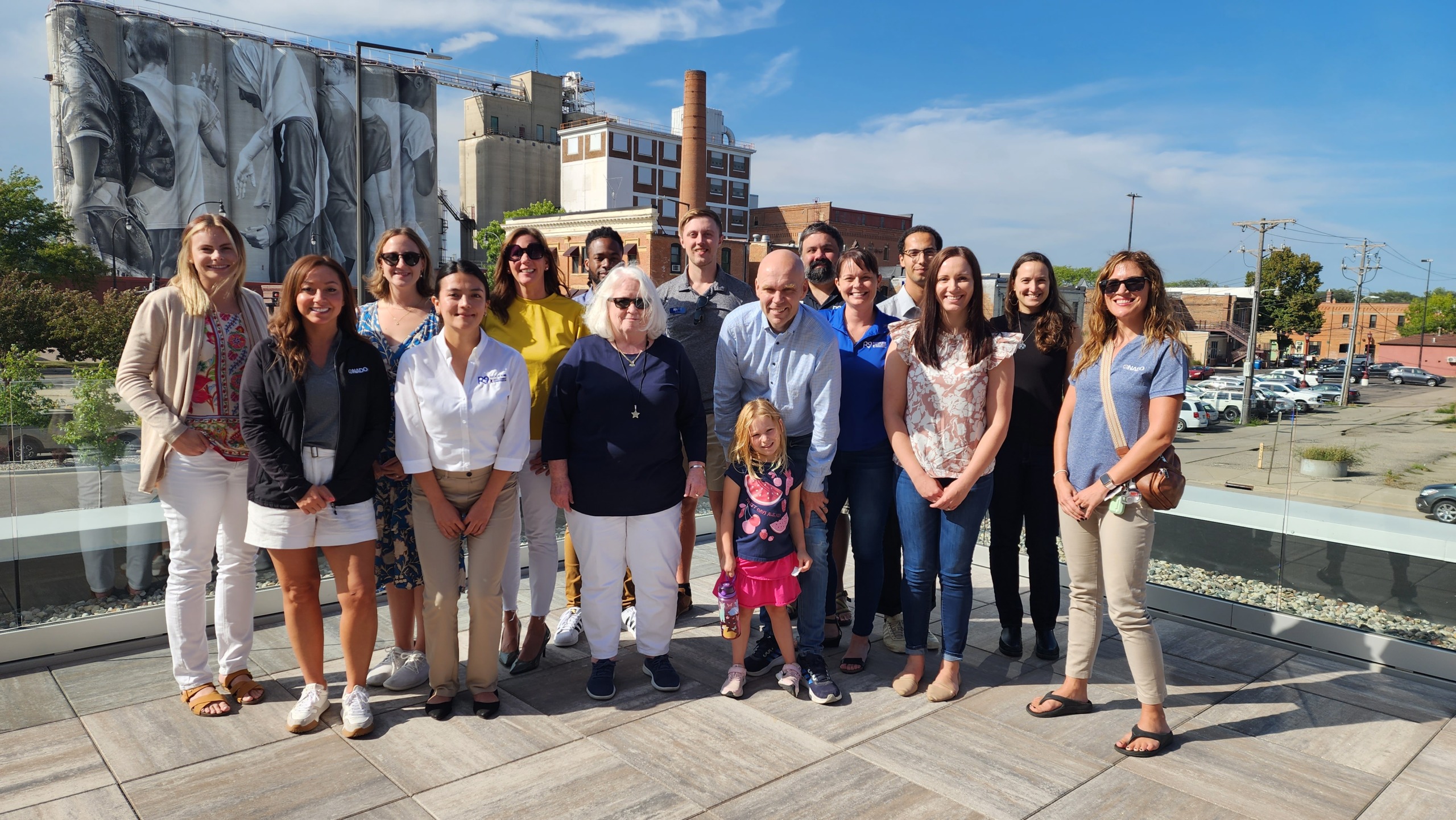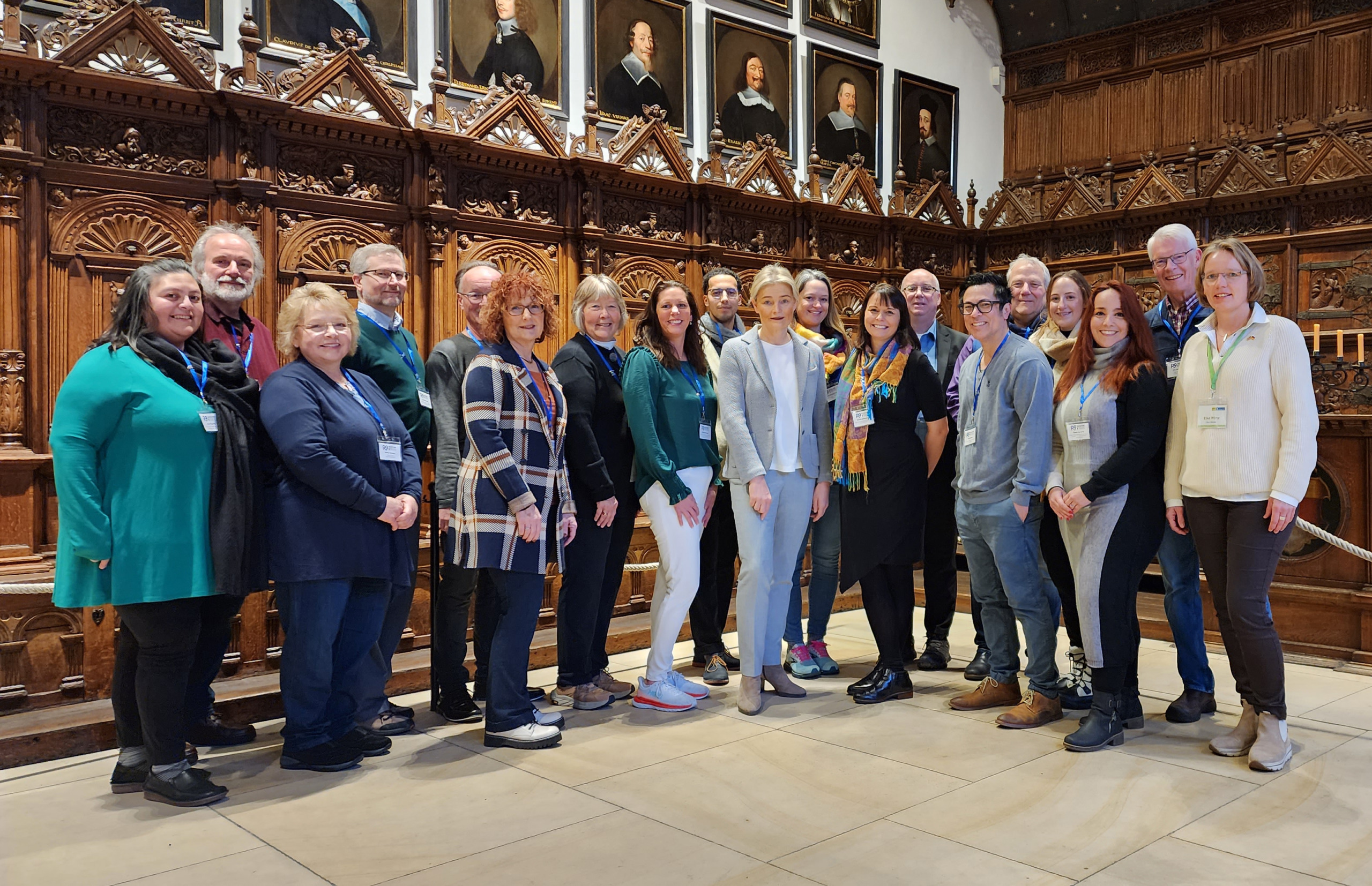Archive for month: February, 2021
Pandemic creating workforce training opportunities
in News/by Region NineIf there’s one good thing to come out of the ongoing COVID-19 pandemic, it’s this: Greater Minnesota has more opportunities to train people to fill ongoing job vacancies.
That was what researchers at the Mankato-based Center for Rural Policy and Development told lawmakers Monday during a House workforce and business development committee hearing.
“The data says, essentially, we now have a pool of workers to engage, particularly from occupations in food preparation and service,” said Kelly Asche, research associate at the center. “We also have a significant workforce shortage in nearly all other occupations in rural Minnesota.”
The pandemic and subsequent government regulations have caused significant unemployment among food service, sales and office and administrative support jobs in particular across the state. At the same time, job vacancies have shrunk somewhat in Greater Minnesota but still remain above 3% overall.
That’s a healthy number of open jobs, Asche said. It shows the pandemic hasn’t done much to affect rural Minnesota’s longstanding demand for more workers.
In south-central and southwest Minnesota, there’s growing demand for workers in health care, community and social services, transportation and moving goods, farming, and computer and mathematics-related jobs, according to state and federal economic data.
All of those industries require advanced training, from certification programs to two- or four-year college degrees. While workforce development organizations have resources to help current clients get retrained, Asche told lawmakers many organizations worry about a sudden influx of unemployed workers who want training once the pandemic’s effects lessen.
Greater Minnesota has faced a growing need for workers in recent years as Minnesota’s population shifts from living in rural to urban areas. In rural areas across the state, job vacancies were at 5% or higher before the pandemic, reaching 6% in southwestern Minnesota.
Since the pandemic hit, open job vacancies in our region went from slightly above 6% to about 3.7%.
More people have been leaving the state’s labor pool due to the pandemic than in recent years as well. Labor numbers fluctuate throughout the year as some jobs are seasonal, but those numbers didn’t bounce back as effectively in 2020 compared to 2019, Asche said.
“Having less people participating in the labor force also compounds issues that we had prior to the pandemic,” said Diane Halvorson, executive director of the South Central Workforce Council.
Halvorson and other local workforce and economic development officials say they’re hearing from workers who are afraid to go back to work because of the pandemic or have to remain at home to help children with school.
There are opportunities for those who want training now, however. South Central College and Minnesota State University have recently ramped up their health care programs, while Region Nine Development Commission is working with MSU to research future workforce needs. In addition, Region Nine is focused on developing training programs to address workforce shortages in manufacturing.
“We have focused on advanced manufacturing and really having more conversations about filling labor,” said Nicole Griensewic, executive director of Region Nine.
Food, retail and hospitality unemployment has hit the Mankato area harder than in other communities throughout the region because of Mankato’s status as a rural hub. Yet Mankato is weathering the pandemic better than other communities for that same reason.
“We do have a higher concentration of industries in Greater Mankato that maybe haven’t been as negatively impacted,” said Jessica Beyer, president and CEO of Greater Mankato Growth.
That also means Mankato is uniquely positioned to take advantage of workforce training. Halvorson said it’s relatively easy to cross-train a person who has worked in service industries such as restaurants or retail for a variety of health care jobs as the two sectors often require similar skill sets in dealing with people. And there are plenty of jobs available in health care at the moment, from janitorial work to office support to machine technicians, among other things.
“There’s quite a wide range of needs out there,” Halvorson said.
The Center for Rural Policy and Development recommends lawmakers make workforce funding a little more flexible this session in how organizations can spend state money and what organizations may be eligible for funding.
Asche and other experts also recommend more support to connect workforce development groups with employers who can give input on the workers they need, as well as more help reaching out to unemployed Minnesotans.
Halvorson also recommends unemployed area residents reach out to local workforce development centers sooner than later.
View the Free Press article here.
A call for racial understanding in Greater Minnesota
in News/by Region NineMinnesota’s summer of protests, violence, and personal and political reckoning brought issues of race and racism front and center in 2020. For many Greater Minnesota communities, however, making their towns more welcoming to everyone was a priority long before then.
Motivated by a variety of concerns, many leaders have partnered with University of Minnesota Extension to look more closely at their communities, become educated about the experiences of people of color, and create local change that makes a difference.
Extension has been redesigning community leadership and civic engagement programs to address diversity, inclusion, and racism—an effort that has certainly accelerated since this past summer. In 2020, eight communities welcomed underrepresented audiences into Extension leadership programs. And from Grand Marais to Mankato, community groups have invited Extension to facilitate learning about cultural competency, unconscious biases, equity, racism, and intercultural competence.
“For us,” says Nicole Griensewic of Southern Minnesota’s Region Nine Development Commission, “it’s about our workforce. We know we need to be a region that is viewed as a welcoming place. Not only do we need to attract workers, we have and will need to continue focusing on retaining our talent.”
“Communities that start new leadership programs often recognize that their community needs people to step up—whether their name is Anderson, Ahmed, or Hernandez,” says Holli Arp, who in 2018 led Extension’s leadership and civic engagement educators to explore ways to invite underrepresented groups into local leadership.
Still other communities believe they need the perspective of diverse leaders to respond to their changing rural demographics.
“More than 39 percent of students in Willmar’s Public Schools have a home language other than English,” says Toby Spanier, leadership and civic engagement educator and leader of the Vision 2040 educational cohort. “So there’s no denying that other cultures are part of the fabric of rural communities. In order to serve all residents well, we need people from those communities to be part of the fabric of leadership, too.”
Latest Posts
 Region Nine Issued the Nation’s First A Rating for Corn StoverApril 19, 2024 - 12:56 pm
Region Nine Issued the Nation’s First A Rating for Corn StoverApril 19, 2024 - 12:56 pm National Non-Profit NADO to Tour MankatoApril 19, 2024 - 10:44 am
National Non-Profit NADO to Tour MankatoApril 19, 2024 - 10:44 am Learning Exchange in Germany Brings Award for Region NineApril 19, 2024 - 9:46 am
Learning Exchange in Germany Brings Award for Region NineApril 19, 2024 - 9:46 am
Contact Us
- 3 Civic Center Plaza, Suite 310
- Mankato, MN 56001
- (507) 387–5643
- Mon – Fri 8:00 – 4:30
Fridays from Memorial Day through Labor Day
we are open until 3:30.
The RNDC office is closed most major holidays. Please go to the Calendar for more information.
Our staff follows a hybrid schedule. Please call ahead or contact an RNDC staff member to schedule a meeting.
Join Our Newsletter
Categories
- Archive (3)
- Miscellaneous (5)
- News (166)
- Newsletter (76)
- RNDC Policies (3)

